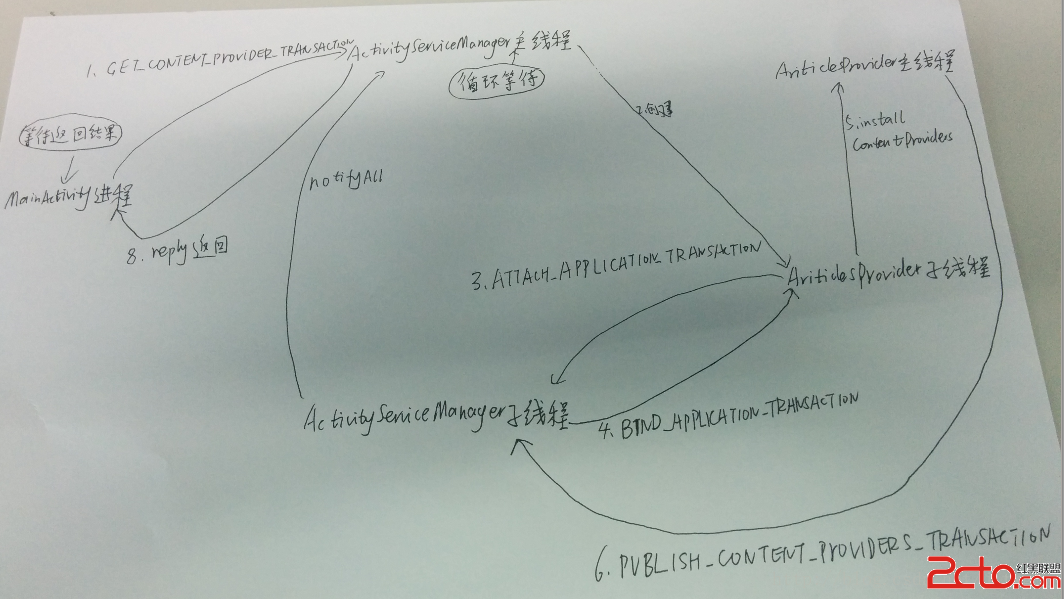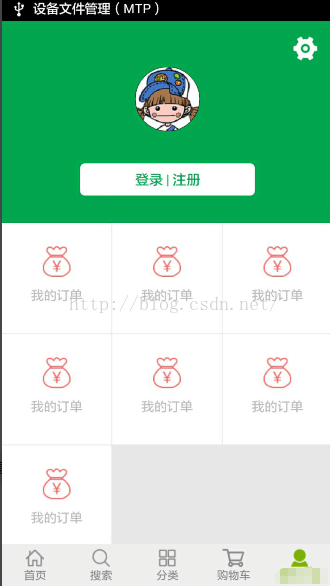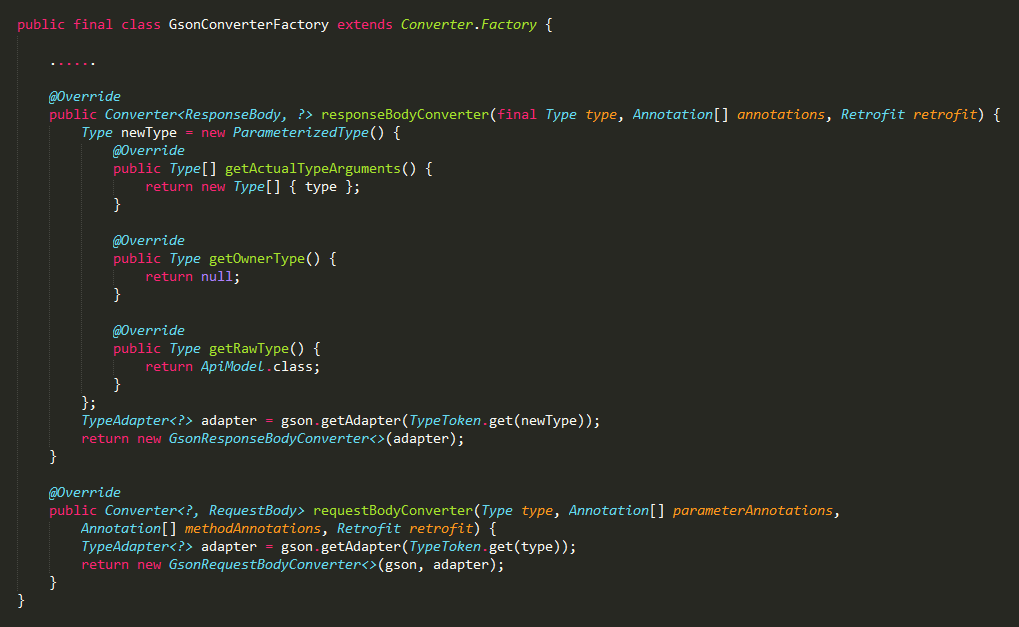在實際開發中LayoutInflater這個類還是非常有用的,它的作用類似於findViewById()。不同點是LayoutInflater是用來找res/layout/下的xml布局文件,並且實例化;而findViewById()是找xml布局文件下的具體widget控件(如 Button、TextView等)。
具體作用:
1、對於一個沒有被載入或者想要動態載入的界面,都需要使用LayoutInflater.inflate()來載入;
2、對於一個已經載入的界面,就可以使用Activiyt.findViewById()方法來獲得其中的界面元素。
LayoutInflater 是一個抽象類,在文檔中如下聲明:
public abstract class LayoutInflater extends Object
獲得 LayoutInflater 實例的三種方式:
1. LayoutInflater inflater = getLayoutInflater(); //調用Activity的getLayoutInflater()
2. LayoutInflater localinflater =(LayoutInflater)context.getSystemService(Context.LAYOUT_INFLATER_SERVICE); 3. LayoutInflater inflater = LayoutInflater.from(context);
其實,這三種方式本質是相同的,從源碼中可以看出:
getLayoutInflater():
Activity 的 getLayoutInflater() 方法是調用 PhoneWindow 的getLayoutInflater()方法,看一下該源代碼:
public PhoneWindow(Context context) {
super(context);
mLayoutInflater = LayoutInflater.from(context);
}
可以看出它其實是調用 LayoutInflater.from(context)。
LayoutInflater.from(context):
public static LayoutInflater from(Context context) {
LayoutInflater LayoutInflater =
(LayoutInflater) context.getSystemService(Context.LAYOUT_INFLATER_SERVICE);
if (LayoutInflater == null) {
throw new AssertionError("LayoutInflater not found.");
}
return LayoutInflater;
}
可以看出它其實調用 context.getSystemService()。
結論:所以這三種方式最終本質是都是調用的Context.getSystemService()。
inflate 方法
通過 sdk 的 api 文檔,可以知道該方法有以下幾種過載形式,返回值均是 View 對象,如下:
public View inflate (int resource, ViewGroup root)
public View inflate (XmlPullParser parser, ViewGroup root)
public View inflate (XmlPullParser parser, ViewGroup root, boolean attachToRoot)
public View inflate (int resource, ViewGroup root, boolean attachToRoot)
1:
public View inflate (int resource, ViewGroup root)
reSource:View的layout的ID
root:如果為null,則將此View作為根,此時既可以應用此View中的其他控件了。
如果!null, 則將默認的layout作為View的根。
2:
public View inflate ( XmlPullParser parser, ViewGroup root)
parser:你需要解析xml的解析接口
root:如果null,則將此View作為根,此時既可以應用此View中的其他控件了。
如果!null, 則將默認的layout作為View的根。
3:
public View inflate ( XmlPullParser parser, ViewGroup root, boolean attachToRoot)
parser:你需要解析View的xml的解析接口
root:如果null,則將此View作為根,此時既可以應用此View中的其他控件了。
如果!null, 則將默認的layout作為View的根。
attachToRoot:
ture:也就將此解析的xml作為View根
fase:則為默認的xml,做為根視圖View
4:
public View inflate (int resource, ViewGroup root, boolean attachToRoot)
resource:View的layout的ID
root:如果null,則將此View作為根,此時既可以應用此View中的其他控件了。
如果!null, 則將默認的layout作為View的根。
attachToRoot:
ture:也就將此解析的xml作為View根
fase:則為默認的xml,做為根視圖View
示意代碼:
public View inflate (int resource, ViewGroup root)
public View inflate (XmlPullParser parser, ViewGroup root)
public View inflate (XmlPullParser parser, ViewGroup root, boolean attachToRoot)
public View inflate (int resource, ViewGroup root, boolean attachToRoot)
同時在此講講讓我去API中去理解這四個函數的原因吧!
在Activity中:
大家是否知道,在setContentView(new MySurfaceView(this))後,此Activity中聲明的View控件,
如:TextView 為什麼引用不到layout布局文件中的控件ID呢!初一看能夠應用到,但是為什麼編譯就報空指針呢!原因:在setContentView(new MySurfaceView(this))後,此時的View變為了根視圖了,雖然能應用到TextView對應的ID,但是我在 MySurfaceView中根本就沒有這個對象,所以就報空指針咯!解決辦法:
View view = LayoutInflater.from(this).inflate(R.layout.passover, null);注:每解析一次都會產生不同的對象
然後你再引用沒問題,使用自如了。
Android中inflate方法的用法
Inflate()作用就是將xml定義的一個布局找出來,但僅僅是找出來而且隱藏的,沒有找到的同時並顯示功能。而setContentView()將布局設置成當前屏幕即Activity的內容,可以直接顯示出來。
SetContentView()一旦調用, layout就會立刻顯示UI;而inflate只會把Layout形成一個以view類實現成的對象。有需要時再用setContentView(view)顯示出來。
注:Inflate()或可理解為“隱性膨脹”,隱性擺放在view裡,inflate()前只是獲得控件,但沒有大小沒有在View裡占據空間,inflate()後有一定大小,只是出於隱藏狀態。
一般在activity中通過setContentView()將界面顯示出來,但是如果在非activity中如何對控件布局設置操作了,這需LayoutInflater動態加載。
在程序中動態加載以上布局。
LayoutInflater flater = LayoutInflater.from(this);View view = flater.inflate(R.layout.example, null);
獲取布局中的控件。
button = (Button) view.findViewById(R.id.button);textView = (TextView)view.findViewById(R.id.tview);
接下來結合源碼說說inflate方法的二種形式:
1.通過 LayoutInflater類的inflate()方法動態加載。兩種獲得LayoutInflater的方法
a. 通過SystemService獲得
LayoutInflater inflater=(LayoutInflater)context.getSystemService(Context.LAYOUT_INFLEATER_SERVICE);
b. 從給定的context中獲取
Public static LayoutInflater from(Context context)
c. 兩者的區別:實際上是一樣的,源碼
public static LayoutInflater from(Context context) {
LayoutInflater LayoutInflater =
(LayoutInflater) context.getSystemService(Context.LAYOUT_INFLATER_SERVICE);
if (LayoutInflater == null) {
throw new AssertionError("LayoutInflater not found.");
}
return LayoutInflater;
}
d. 實現代碼:
第一步,先獲得LayoutInflater對象。
LayoutInflater inflater=context.getSystemService(Context.LAYOUT_INFLEATER_SERVICE);
第二步,調用inflate()方法加載布局資源。
View view=inflater.inflate(int resource, ViewGroup root);
參數1:要加載的xml資源文件,加載出錯拋出InflateException異常。
參數2:新生成視圖的父層,可設置為NULL。
第三步,將新生成的View加入到需要的View中,我們可以通過findViewById()方法獲取當前Acitivty中的視圖MyView,然後把新生成的view加入到Myview中。
MyView.add(view, new LayoutParams(LayoutParams.FILL_PARENT, LayoutParams.FILL_PARENT));
注意:需要指定視圖屬性。
也可以調用inflater.inflate(int resource, ViewGroup root)方法時直接將視圖加入到父視圖中。
如:inflater.inflate(R.layout.login,MyView);
這種情況不好控制新視圖的長寬。建議使用第一種。
注: LayoutInflater.inflate()將Layout文件轉換為View,專門供Layout使用的Inflater。雖然Layout也是 View的子類,但在android中如果想將xml中的Layout轉換為View放入.java代碼中操作,只能通過Inflater,而不能通過 findViewById()。
第二種方法:使用View的靜態方法:
static View inflate(Context context, int resource, ViewGroup root)
參數1:Acitivity或Application的上下文
參數2:指定的xml布局文件
參數3:指定父組件。
同樣可以通過:
View view=View.inflate(this,R.layout.*,null);
生成一個新的View,然後調用Add方法指定View的屬性並加入的父組件中。
當然也可以使用View.inflate(this,R.layout.*,MyView)直接加入到父組件中。
findViewById有兩種形式 :
R.layout.xx是引用res/layout/xx.xml的布局文件(inflate 方法),R.id.xx是引用布局文件裡面的組件,組件的id是xx(findViewById方法)。所有的組件id都能用R.id.xx來查看,但是 組件不在setContentView()裡面的layout中就無法使用,Activity.findViewById()會出現空指針異常
a. activity中的findViewById(int id)
b. View 中的findViewById(int id)
6.不同點是LayoutInflater是用來找layout下xml布局文件,並且實例化!而findViewById()是找具體xml下的具體 widget控件(如:Button,TextView等)。
Android上還有一個與Inflate()類似功能的方法叫findViewById(),二者有時均可使用,但也有區別,
區別在於:
findViewById()只能找出當前布局中的組件,即setConentView()的那個layout裡的組件.
如果你的Activity裡用到別的layout,比如對話框layout,你還要設置這個layout上的其他組件的內容,你就必須用inflate()方法先將對話框的layout找出來,然後再用findViewById()找到它上面的其它組件。例如:
View view1=View.inflate(this,R.layout.dialog_layout,null);
TextViewdialogTV=(TextView)view1.findViewById(R.id.dialog_tv);
dialogTV.setText("abcd");
注:R.id.dialog_tv是在對話框layout上的組件,而這時若直接用this.findViewById(R.id.dialog_tv)肯定會報錯。
View viewStub = ((ViewStub) findViewById(R.id.stubView)).inflate();
 Android DrawerLayout帶有側滑功能的布局類(2)
Android DrawerLayout帶有側滑功能的布局類(2)
 Android Content Provider的啟動過程源代碼分析
Android Content Provider的啟動過程源代碼分析
 Android中RecyclerView布局代替GridView實現類似支付寶的界面
Android中RecyclerView布局代替GridView實現類似支付寶的界面
 Retrofit Token過期自動刷新並重新請求接口
Retrofit Token過期自動刷新並重新請求接口